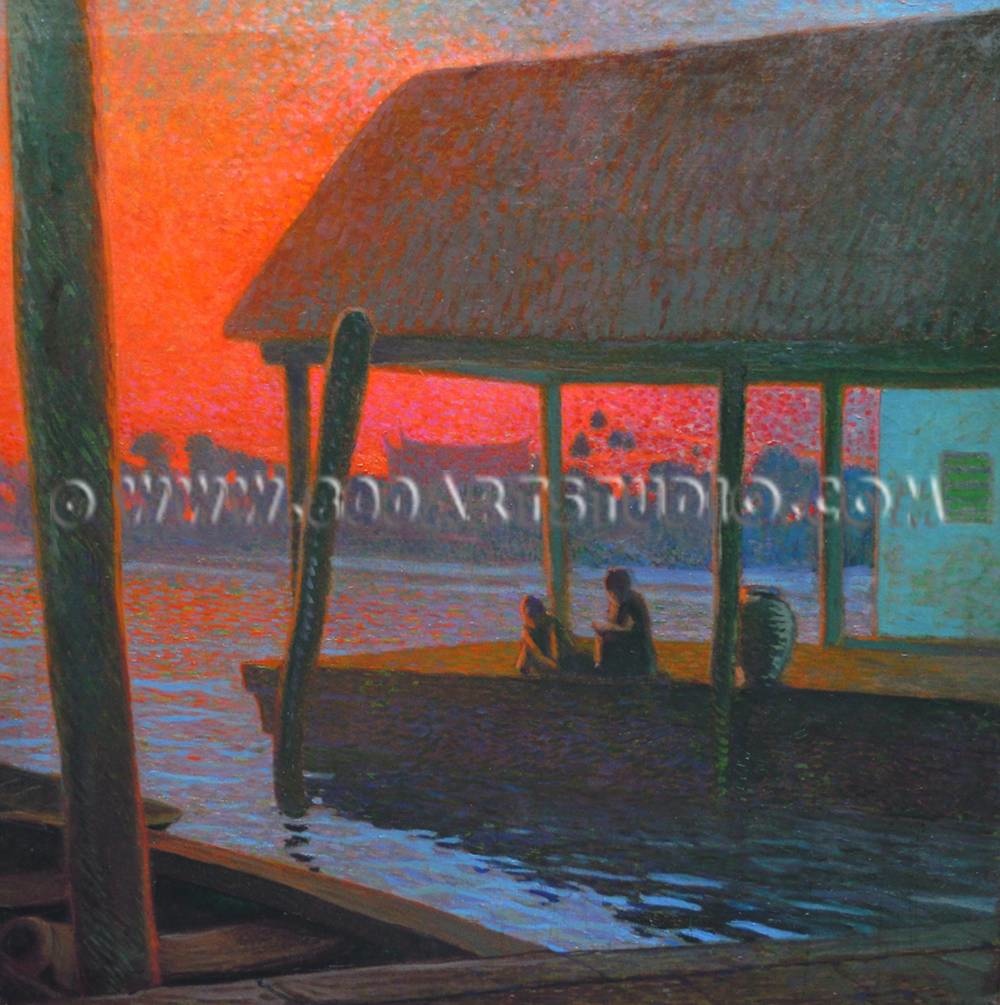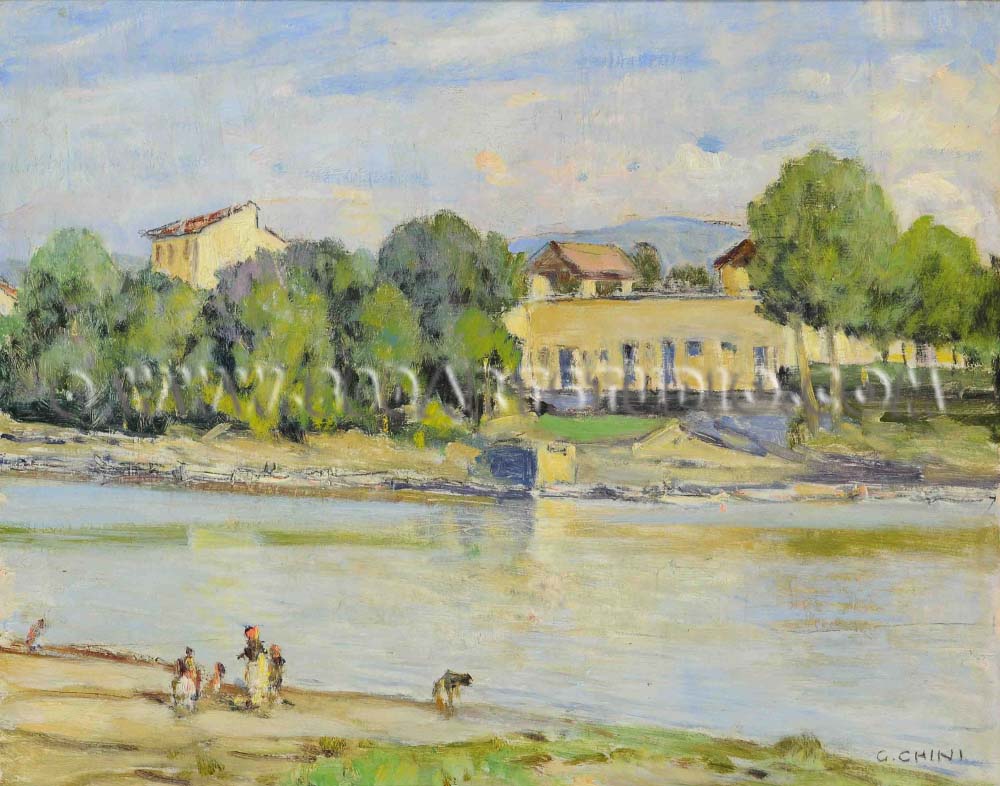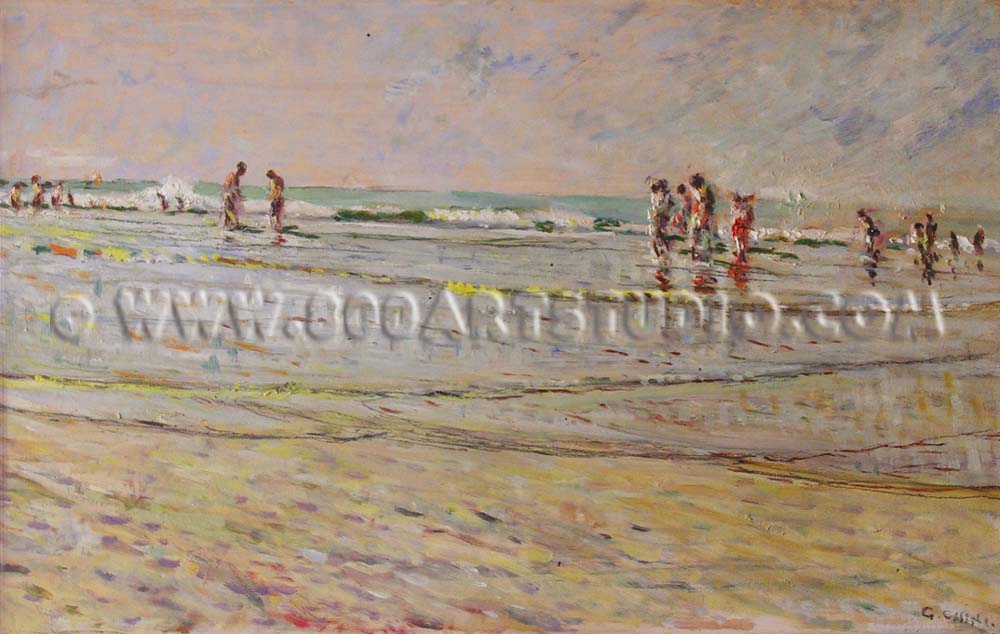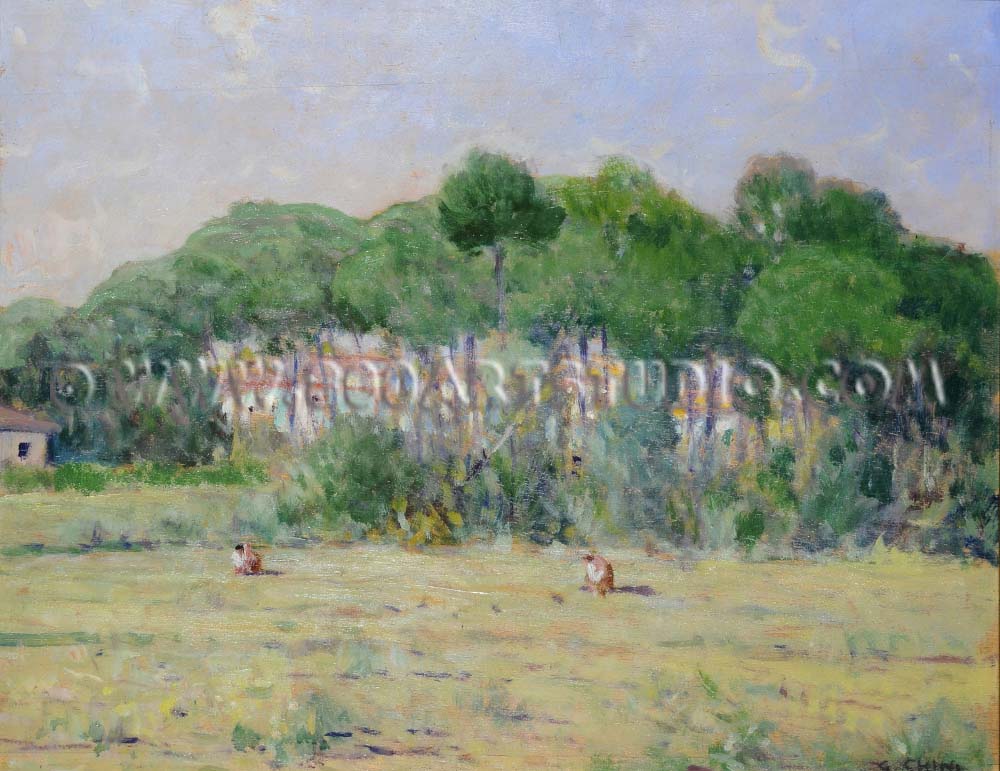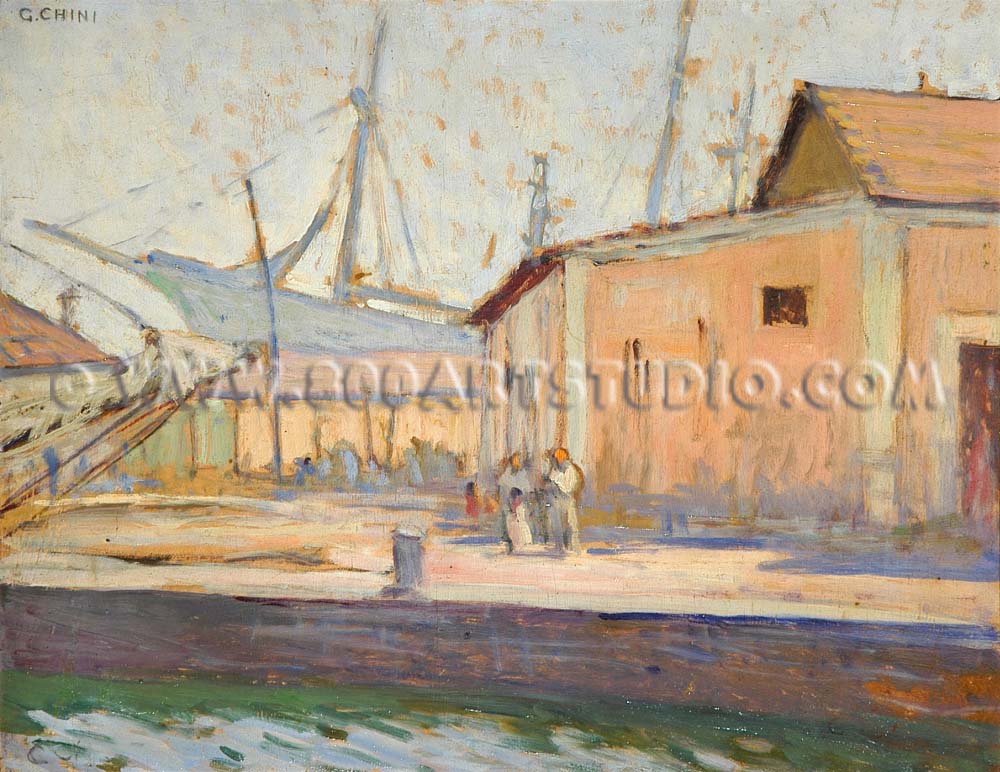After he finished elementary school, Galileo Chini attended art school. When his father died, Chini began an apprenticeship with an uncle who was a restorer, at the same time enrolling in the Free School for Drawing Nudes at the Academy of Fine Arts in Florence in 1890. There he had the opportunity to get to know Plinio Nomellini and Telemaco Signorini. Upon his uncle’s death, Chini took over the family business and obtained several contracts from the Sovrintendenza.
In 1896, the Marquis Ginori’s historic Florentine factory, Doccia, was sold to Milanese industrialist Richard; in the same year Chini, together with four of his friends, lay the foundation for a small ceramic factory, which they named “Ceramic Art”. Despite the small factory’s restricted capacity, the pieces that Chini’s group made were of extraordinary quality and caused a profound change in Italian production, giving a new look to the national majolica. Their ceramics were distributed widely, spreading as far as the markets in Europe and the United States. During the same period of time, Chini also participated in the Universal Exhibitions in London, Turin, and the Biennial in Venice – to be precise the IV and XII Biennials – and he is one of a number of decorative artists ho should be remembered for their works shown at the savings banks of Pistoia, Arezzo, and Florence.
From 1911-1914 he was called to Bangkok to decorate the Throne Room of the king of Siam; his success was subsequently confirmed when he was offered the job of painting the panels of the Central Room of the XI Venice Biennial. It was at this point in his career that Chini came to be considered the “official painter” of the Venice Biennial. He also put great time and effort into theatrical stage design; in the course of his work he tried to renovate the splendor – just a tad on the heavy side – of antiquated Baroque set design, upon which he managed to imprint the new Liberty vocabulary. When he returned from Siam, he created the sets for Giacomo Puccini’s Turandot.
In 1909 he began teaching painting at the Free Academy of Rome; in 1911 he obtained the same post in Florence. Sometime in the 30s, Chini suffered an emotional crisis, in which he felt dissatisfied with his role as an official artist. His search led him back to the time that he had spent with the Macchiaioli artists. This was the beginning of an especially happy period, one characterized by small landscape-inspired compositions. This period lasted to the end of his life.
Written by : Cecilia Iacopetti – Translated by: Paola Ludovici and Nanette Cooper
© Studio d’Arte dell’800


